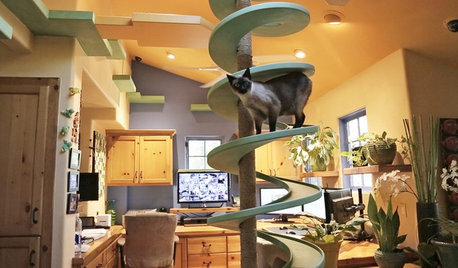A healthy, balanced oasis in the midst of agribiz?
owiebrain
12 years ago
Related Stories

FEEL-GOOD HOME10 Tips for a More Peaceful Home
Turn your everyday living space into a serene retreat by clearing visual distractions, softening your lighting and more
Full Story
PETSIncredible Home Catwalks Make for Purr-fectly Happy Felines
Walkways and tunnels custom built to the tune of about $35,000 keep a homeowner’s 18 cats on cloud nine
Full Story
MOST POPULAR5 Remodels That Make Good Resale Value Sense — and 5 That Don’t
Find out which projects offer the best return on your investment dollars
Full Story
FUN HOUZZ31 True Tales of Remodeling Gone Wild
Drugs, sex, excess — the home design industry is rife with stories that will blow your mind, or at least leave you scratching your head
Full StoryMore Discussions






slowpoke_gardener
redding
Related Professionals
Danbury Landscape Architects & Landscape Designers · Franconia Landscape Architects & Landscape Designers · Norton Shores Landscape Architects & Landscape Designers · South Elgin Landscape Architects & Landscape Designers · Peabody Landscape Contractors · Berkley Landscape Contractors · Nashua Landscape Contractors · Wilsonville Landscape Contractors · Quartz Hill Landscape Contractors · Baton Rouge Decks, Patios & Outdoor Enclosures · Estero Decks, Patios & Outdoor Enclosures · High Point Decks, Patios & Outdoor Enclosures · New York City Decks, Patios & Outdoor Enclosures · West Chicago Decks, Patios & Outdoor Enclosures · Highland Decks, Patios & Outdoor Enclosuressoonergrandmom
Okiedawn OK Zone 7
tmlgn
owiebrainOriginal Author
redding
Macmex
redding
soonergrandmom
slowpoke_gardener
Okiedawn OK Zone 7
owiebrainOriginal Author
soonergrandmom
redding
Macmex
Okiedawn OK Zone 7
owiebrainOriginal Author